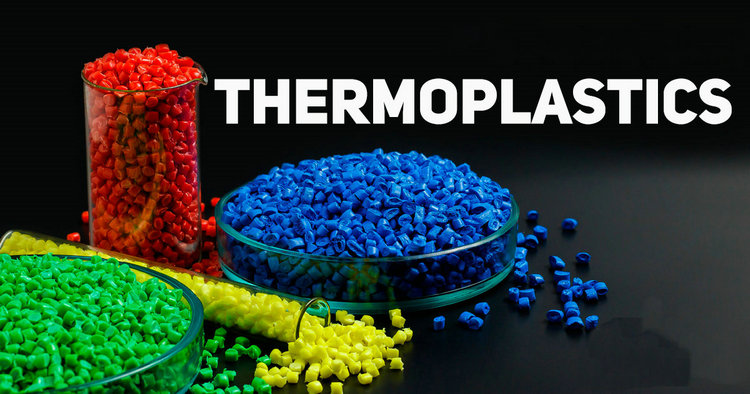
Introduction
Engineering plastics are a class of polymer materials with excellent properties and have a wide range of applications in various fields. Among them, ultra-high temperature resistant engineering plastics are particularly noteworthy due to their outstanding high-temperature resistance characteristics. Below, we will introduce five types of ultra-high temperature resistant engineering plastics.
Polyphenylene Sulfide (PPS)
Polyphenylene sulfide (PPS) is a crystalline polymer known for its extremely high thermal stability and chemical stability. It can operate stably in high-temperature environments above 200°C for long periods and possesses good mechanical properties and electrical insulation. The main application areas of PPS include electronics, automotive, aerospace, etc. In electronics, PPS is commonly used to manufacture connectors, switches, relays, and other components. In the automotive industry, it is used to produce engine peripheral parts, fuel system components, etc. In aerospace, PPS is widely used to manufacture high-temperature-resistant structural parts and functional components. The excellence of PPS comes from its unique molecular structure, which contains a large number of benzene rings and sulfur atoms in its molecular chain. These structures give PPS high melting points, high strength, high rigidity, etc. In addition, PPS also has good chemical corrosion resistance and can resist the corrosion of most acids, alkalis, salts, and other chemicals. However, PPS also has some drawbacks, such as brittleness and processing difficulty. To overcome these shortcomings, modifications are often necessary, such as adding toughening agents or improving the processing technology.
Polyimide (PI)
Polyimide (PI) is a polymer with exceptional high-temperature resistance. It can be used in environments above 300°C for long periods and can even withstand temperatures up to 500°C for short periods. PI is not only heat-resistant but also possesses excellent mechanical properties, electrical insulation properties, and chemical corrosion resistance. It has broad applications in aerospace, electronics, chemical industries, and more. In aerospace, PI is often used to make high-temperature structural parts, thermal insulation materials, sealing materials, etc. In electronics, PI can be used for manufacturing printed circuit boards, electronic packaging materials, and more. In the chemical industry, PI can be used to produce corrosion-resistant pipes, containers, and other equipment. The excellent properties of PI are due to its unique molecular structure, with imide groups in the molecular chain, which give it outstanding high-temperature resistance and chemical corrosion resistance. Additionally, PI's properties can be adjusted through various synthesis methods and modification techniques to meet the needs of different fields. Despite its many excellent properties, PI also has some drawbacks, such as high cost and difficult processing. This limits its large-scale application in some fields. However, with continuous technological advancements and cost reductions, PI’s application prospects will continue to expand.
Polyether Ether Ketone (PEEK)
Polyether ether ketone (PEEK) is a high-performance thermoplastic material with extremely high heat resistance and mechanical strength. Its continuous use temperature can reach 260°C, and its instantaneous use temperature can even exceed 300°C. PEEK also has good chemical corrosion resistance, wear resistance, and electrical insulation properties. PEEK has significant applications in the medical field, such as in the manufacturing of artificial bones, joints, and other medical devices. In aerospace, it is used to manufacture aircraft components; in the automotive industry, it is used for producing high-performance components. PEEK's excellent performance makes it an ideal material to replace metals, not only reducing weight but also improving component performance and reliability. The preparation process of PEEK is relatively complex, and the cost is high. However, with the development of technology and expansion of production scale, its cost is expected to decrease. Meanwhile, researchers are constantly exploring new modification methods and application fields to further exploit the advantages of PEEK.
Polybenzimidazole (PBI)
Polybenzimidazole (PBI) is an ultra-high-temperature engineering plastic with special properties. It can maintain stability at extremely high temperatures, with a long-term use temperature of around 370°C. PBI has excellent thermal stability, mechanical strength, and chemical corrosion resistance. In some extreme high-temperature and harsh chemical environments, PBI performs excellently. For example, in certain specialized chemical equipment, PBI is used as a material for key components; in certain high-temperature fuel cells, PBI is also used to manufacture critical parts. The synthesis of PBI is challenging, which also results in its higher price. However, due to its unique properties, PBI remains indispensable in certain fields with very high performance requirements. Researchers are continually exploring new application methods and modification techniques to improve its properties and reduce costs, further expanding its range of applications.
Polyarylsulfone (PASF)
Polyarylsulfone (PASF) is an engineering plastic with excellent high-temperature resistance and mechanical properties. Its long-term use temperature can reach around 200°C, and it also has good chemical corrosion resistance and dimensional stability. PASF has applications in electronics, automotive, aerospace, and other fields. In electronics, it can be used to manufacture high-temperature-resistant insulating materials and structural parts; in the automotive industry, it can be used to produce engine peripheral components, etc. PASF's performance characteristics make it an important engineering plastic, providing reliable solutions for many high-temperature and harsh environment applications. However, PASF also faces challenges, such as high costs and difficult processing. To better promote and apply it, further optimization of production processes and cost reduction are necessary. At the same time, continuous technological innovation and application expansion are needed to fully exploit its advantages and potential.
Conclusion
In conclusion, these five ultra-high temperature engineering plastics each have their unique characteristics and play important roles in various fields. With continuous technological advancement and increasing application demand, their prospects for use will become even broader, providing strong support for the development of various industries.